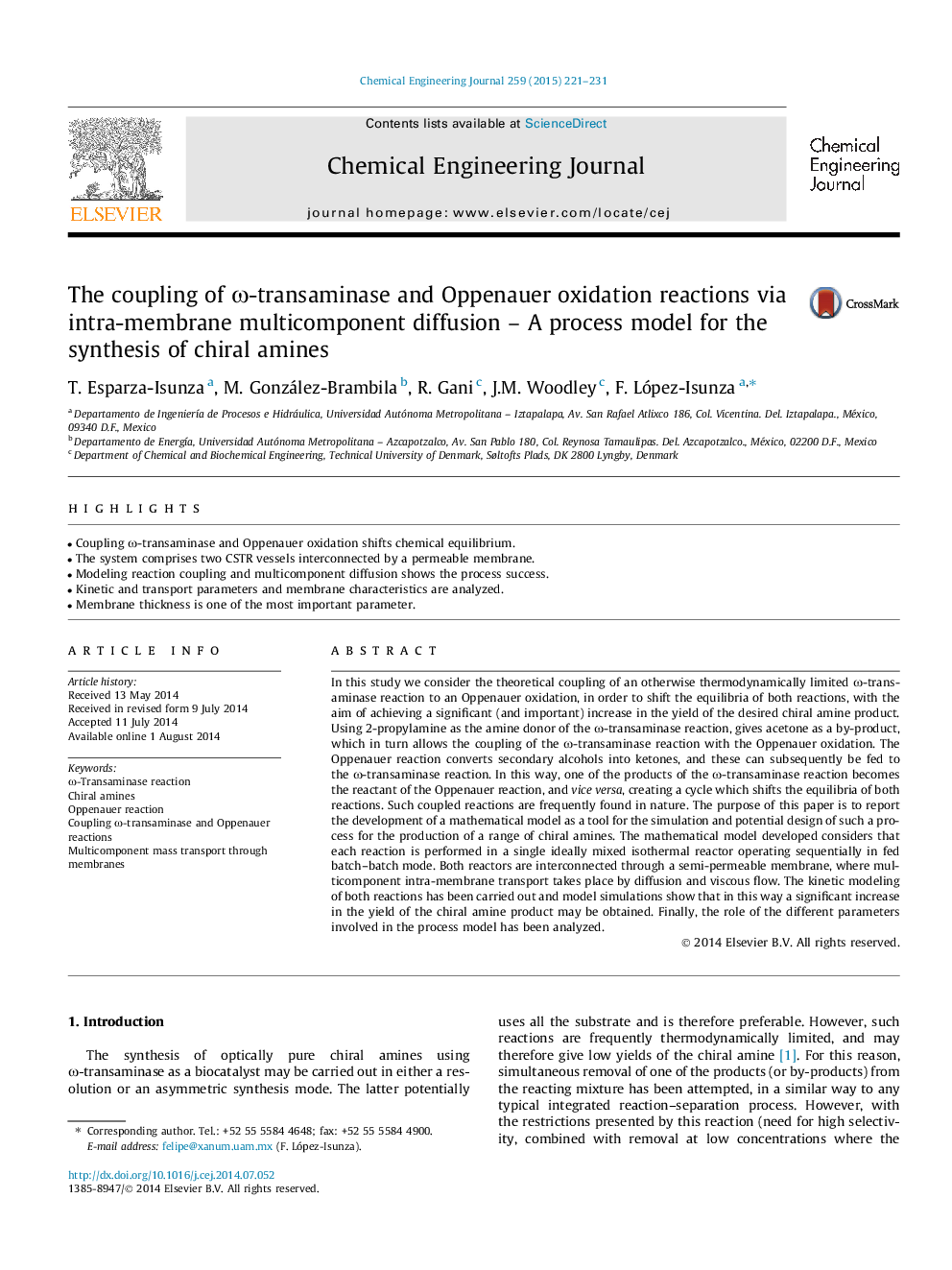| Article ID | Journal | Published Year | Pages | File Type |
|---|---|---|---|---|
| 6586158 | Chemical Engineering Journal | 2015 | 11 Pages |
Abstract
In this study we consider the theoretical coupling of an otherwise thermodynamically limited Ï-transaminase reaction to an Oppenauer oxidation, in order to shift the equilibria of both reactions, with the aim of achieving a significant (and important) increase in the yield of the desired chiral amine product. Using 2-propylamine as the amine donor of the Ï-transaminase reaction, gives acetone as a by-product, which in turn allows the coupling of the Ï-transaminase reaction with the Oppenauer oxidation. The Oppenauer reaction converts secondary alcohols into ketones, and these can subsequently be fed to the Ï-transaminase reaction. In this way, one of the products of the Ï-transaminase reaction becomes the reactant of the Oppenauer reaction, and vice versa, creating a cycle which shifts the equilibria of both reactions. Such coupled reactions are frequently found in nature. The purpose of this paper is to report the development of a mathematical model as a tool for the simulation and potential design of such a process for the production of a range of chiral amines. The mathematical model developed considers that each reaction is performed in a single ideally mixed isothermal reactor operating sequentially in fed batch-batch mode. Both reactors are interconnected through a semi-permeable membrane, where multicomponent intra-membrane transport takes place by diffusion and viscous flow. The kinetic modeling of both reactions has been carried out and model simulations show that in this way a significant increase in the yield of the chiral amine product may be obtained. Finally, the role of the different parameters involved in the process model has been analyzed.
Keywords
Related Topics
Physical Sciences and Engineering
Chemical Engineering
Chemical Engineering (General)
Authors
T. Esparza-Isunza, M. González-Brambila, R. Gani, J.M. Woodley, F. López-Isunza,
